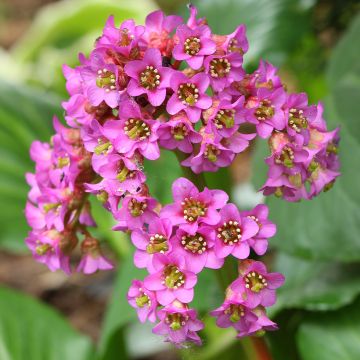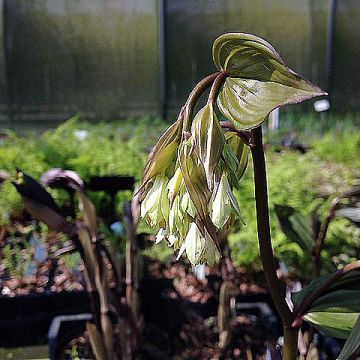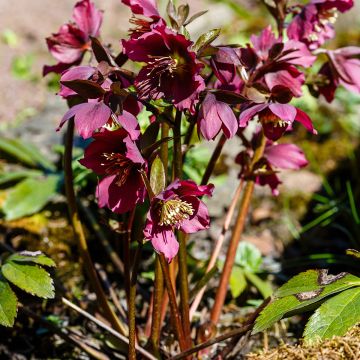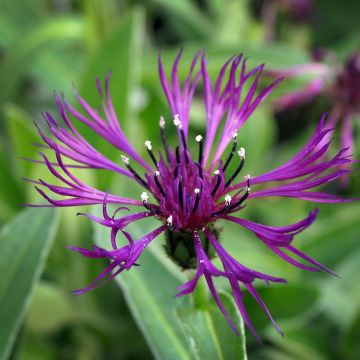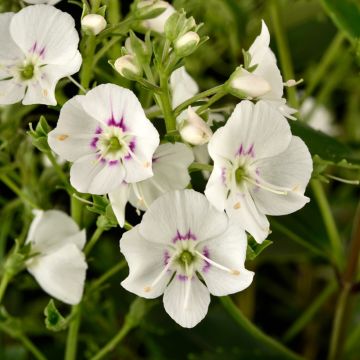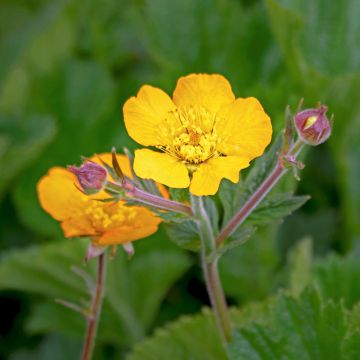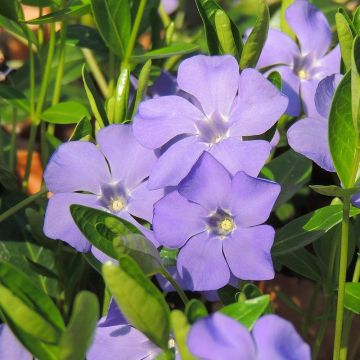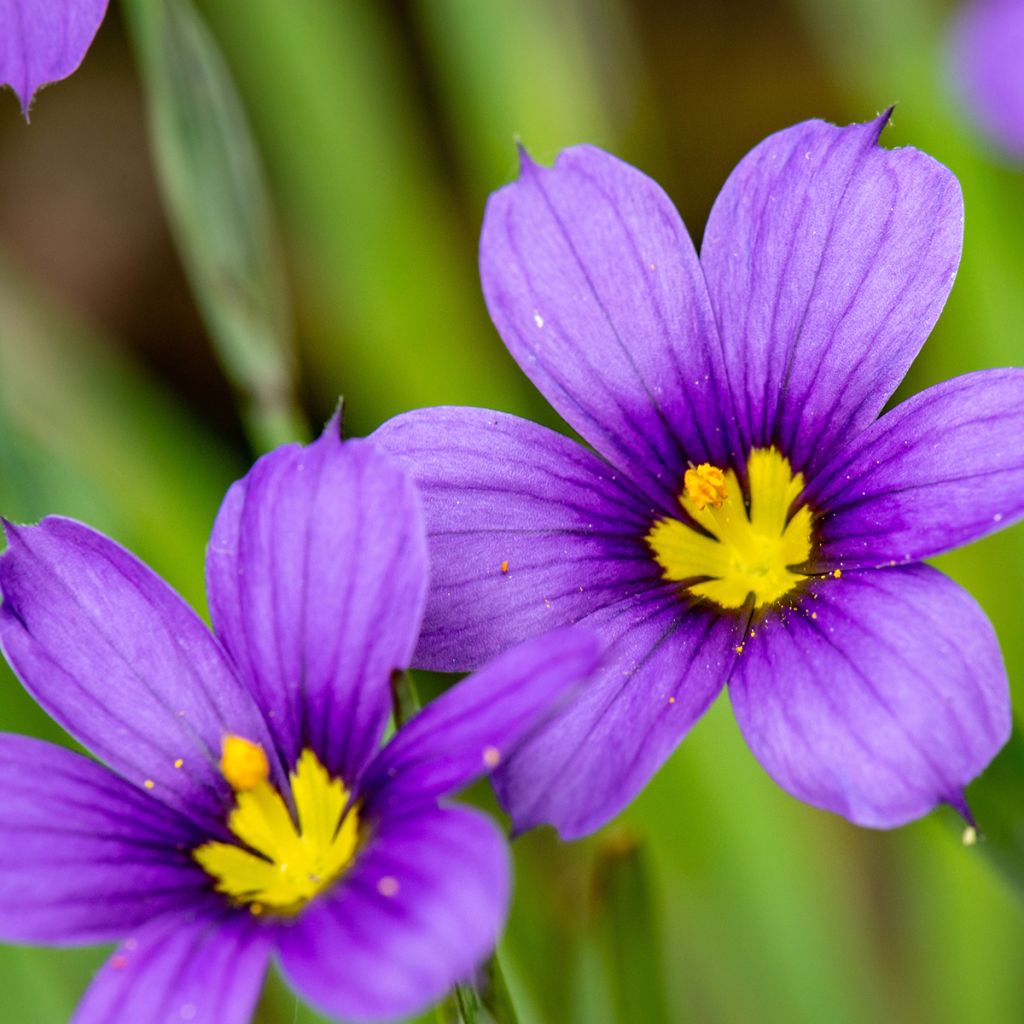

Sisyrinchium angustifolium Lucerne
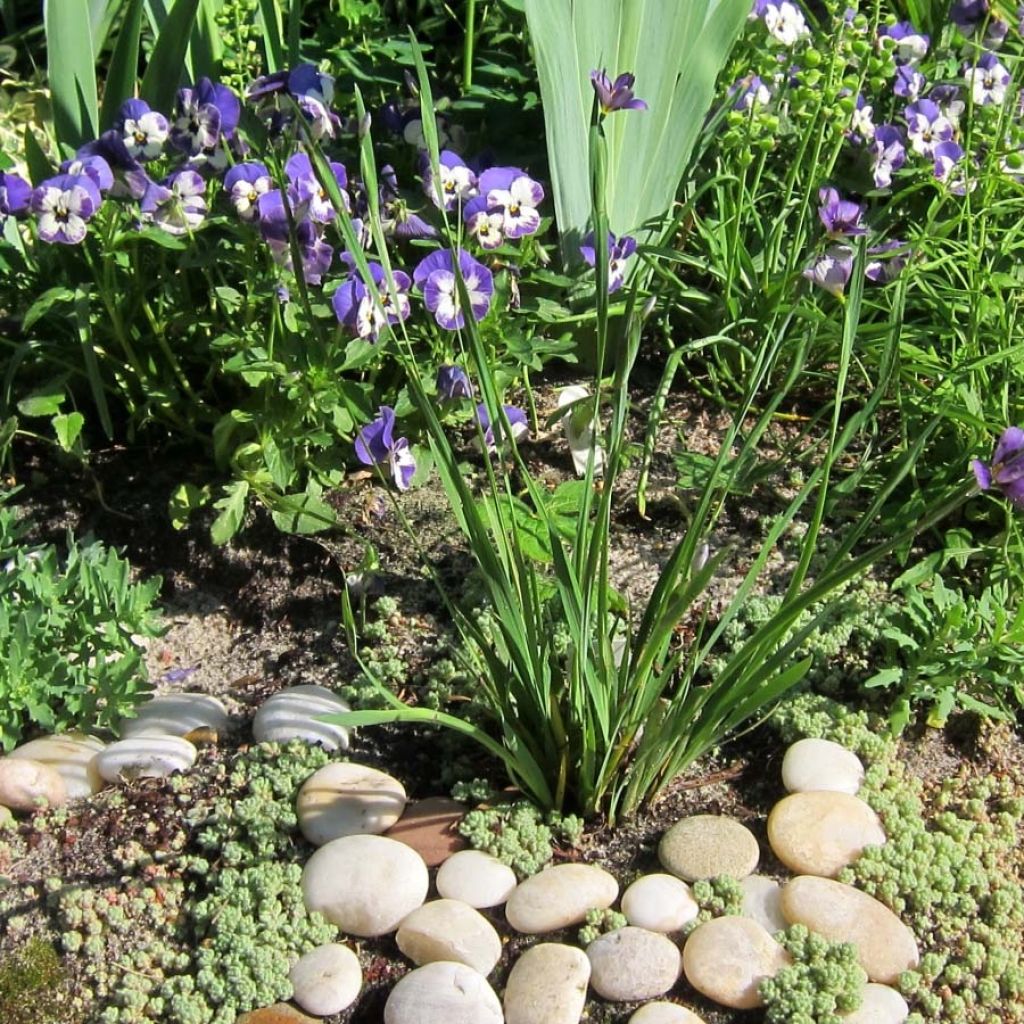

Sisyrinchium angustifolium Lucerne
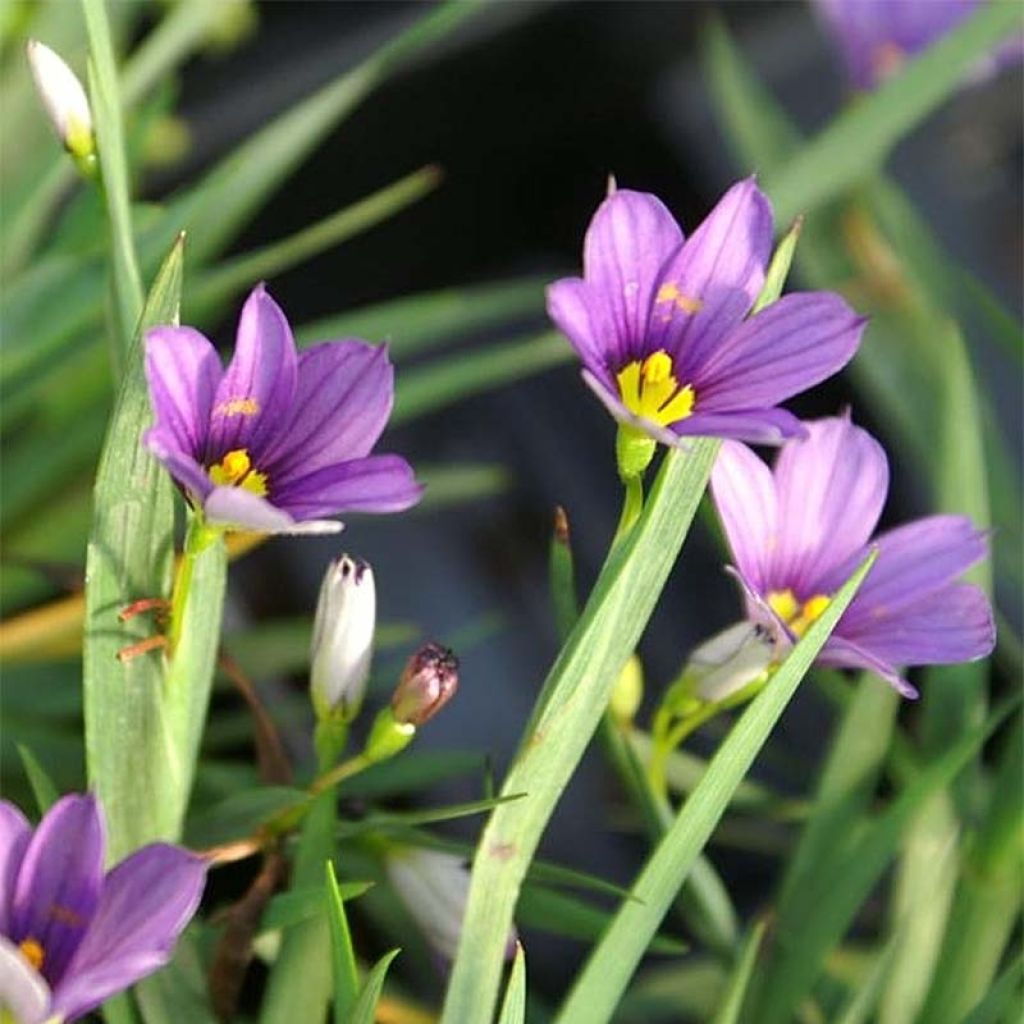

Sisyrinchium angustifolium Lucerne
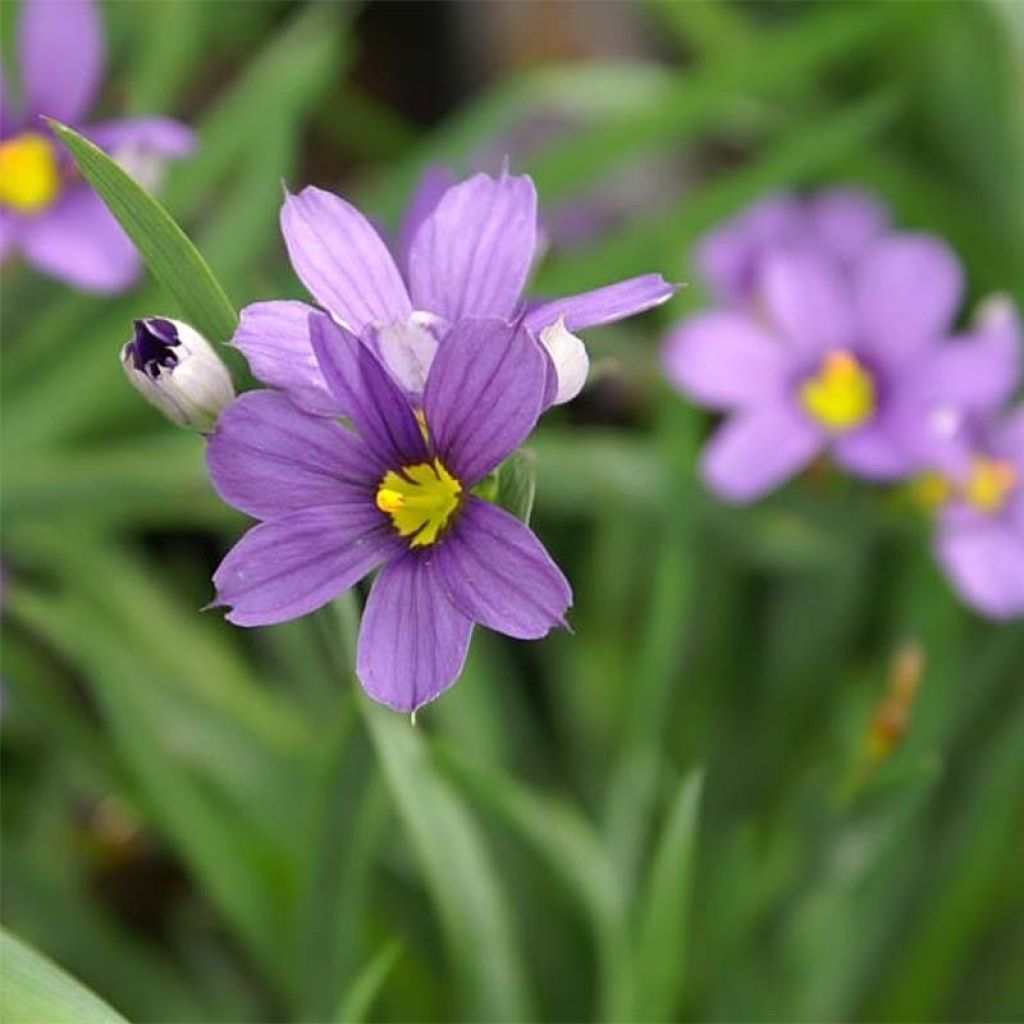

Sisyrinchium angustifolium Lucerne
Sisyrinchium angustifolium Lucerne
Sisyrinchium x angustifolium Lucerne
Narrowleaf Blue-eyed Grass, Grass flower, Blue-eyed grass
Special offer!
Receive a €20 voucher for any order over €90 (excluding delivery costs, credit notes, and plastic-free options)!
1- Add your favorite plants to your cart.
2- Once you have reached €90, confirm your order (you can even choose the delivery date!).
3- As soon as your order is shipped, you will receive an email containing your voucher code, valid for 3 months (90 days).
Your voucher is unique and can only be used once, for any order with a minimum value of €20, excluding delivery costs.
Can be combined with other current offers, non-divisible and non-refundable.
Home or relay delivery (depending on size and destination)
Schedule delivery date,
and select date in basket
This plant carries a 12 months recovery warranty
More information
We guarantee the quality of our plants for a full growing cycle, and will replace at our expense any plant that fails to recover under normal climatic and planting conditions.
Would this plant suit my garden?
Set up your Plantfit profile →
Description
Sisyrinchium angustifolium 'Lucerne' is a lovely plant with narrow leaves, more floriferous and with larger and more brightly coloured flowers than its wild ancestors. This small perennial is related to irises and forms a tuft of evergreen, grass-like foliage. In late spring it produces flower stalks adorned with luminous, star-shaped, intense blue-mauve flowers with a golden centre. This delicate plant is cheerful and easy to grow and will find a place along a path or in a border, or rock garden that is not too dry, best in full sun so that its flowers open fully.
Sisyrinchium Lucerne was discovered in a nursery not far from the Swiss city of Lucerne. One of its identified parents, the Sisyrinchium angustifolium, is native to the United States where it grows in meadows, fallow land, slopes, and clearings, blending in with the grasses when not in bloom. This plant likes limestone soils and thrives near streams, but it can also adapt to drier environments. In the USA, it is known as "blue-eyes-grass". It belongs to the Iridaceae family.
Sisyrinchium 'Lucerne' is a small perennial, reaching no more than 35 cm (14in) high when in bloom, and 20 to 30 cm (8 to 12in) for its foliage. The plant has a short, non-spreading rhizome, allowing it to spread slightly in width by producing new rosettes of leaves. It develops narrow, ribbon-like leaves, overlapping and arranged in a fan shape which persists throughout winter.
It flowers in late spring, in May-June, and will sometimes continue more sporadically until September. Multiple rigid and flattened flower stalks branch out from the emerging foliage. Each flower is approximately 4-5 cm (2in) in diameter, and consists of 6 light blue-mauve petals streaked with violet, arranged in a star shape around a small golden throat. After pollination by insects, the flowers occasionally produce small round capsules of small round, grey seeds. This hybrid variety 'Lucerne' self-seeds much less than the species.
Sisyrinchium 'Lucerne' will be stunning planted en masse along a path or to highlight the curve of a border. It will also make a great impact in a not-too-dry rock garden. A truly attractive and easy plant in many ways, it also brightens the surroundings of waterfalls and artificial streams, popping up here and there to give the landscape a natural look. It goes well with aubrietas, dwarf perennial geraniums, or creeping veronicas. This perennial will also look good in a planter, or a window box.
Sisyrinchium angustifolium Lucerne in pictures
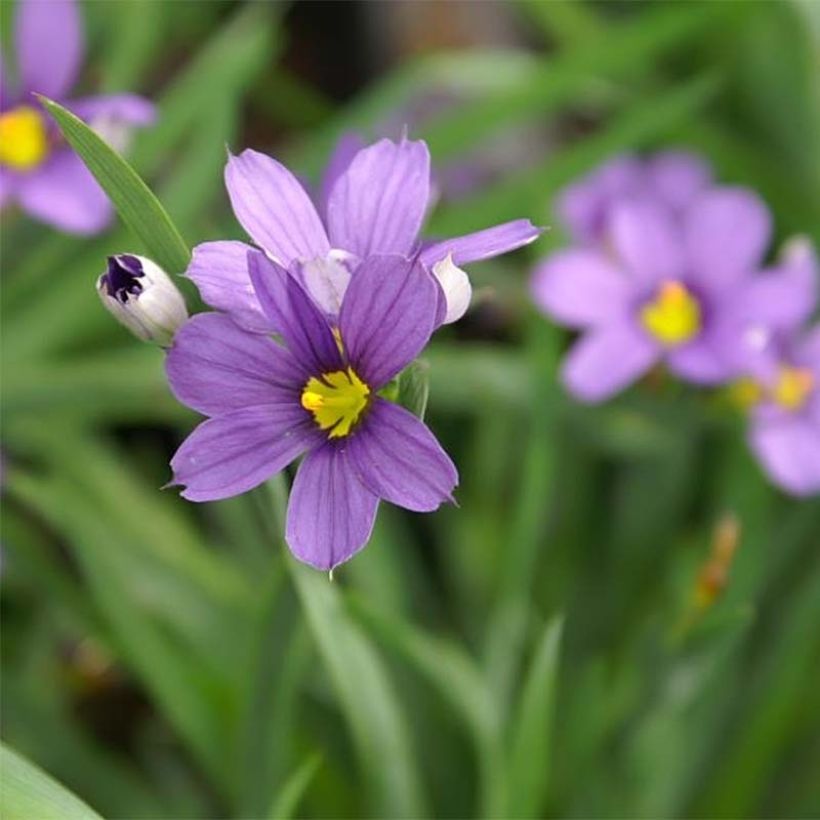

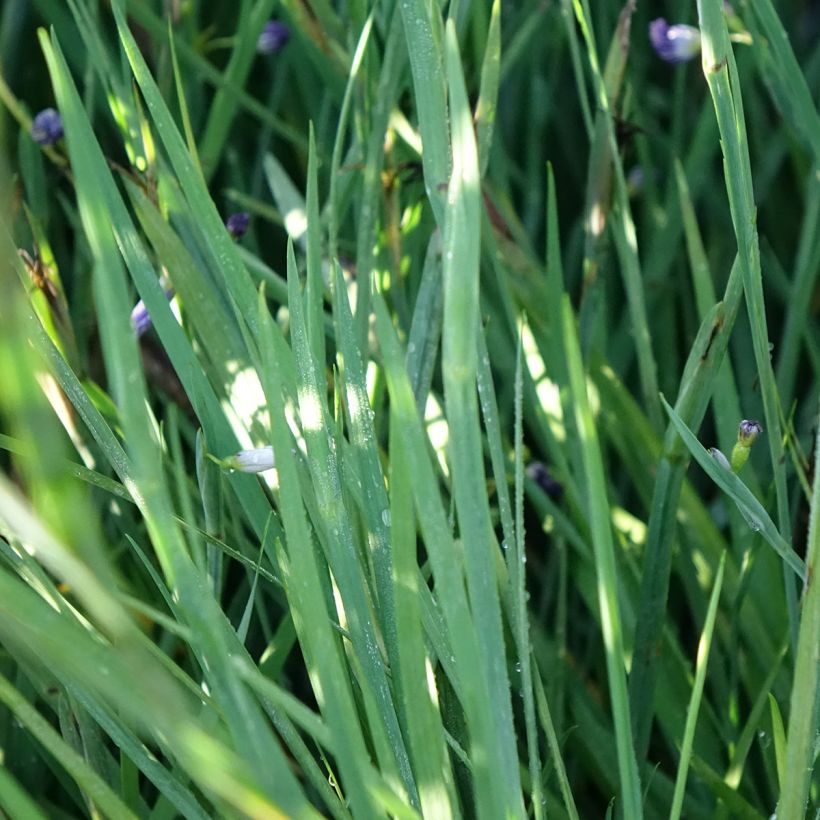

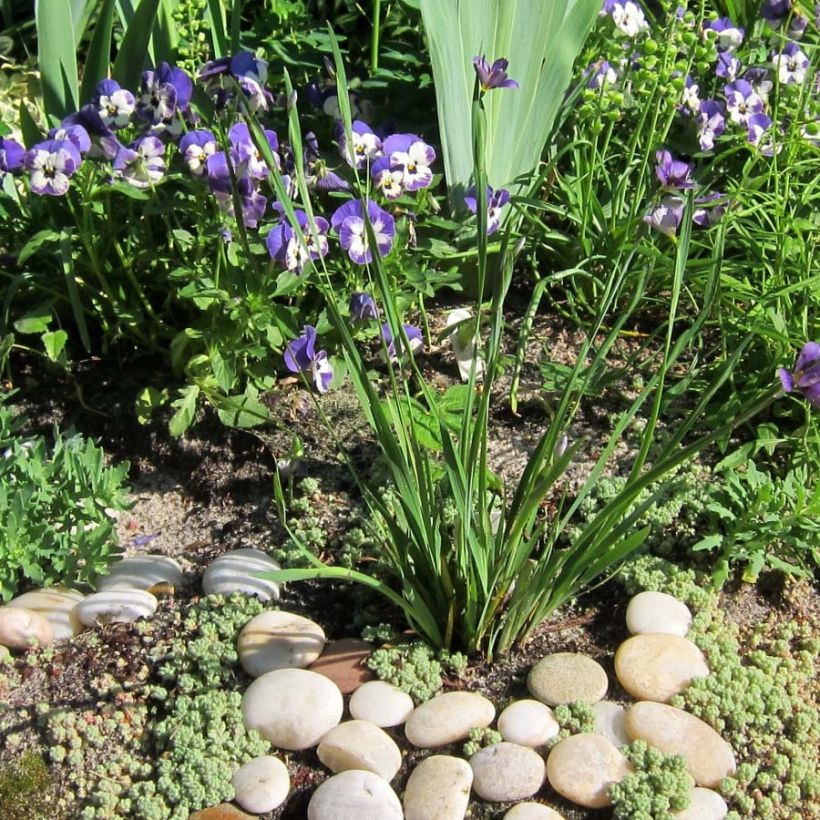

Flowering
Foliage
Plant habit
Botanical data
Sisyrinchium
x angustifolium
Lucerne
Iridaceae
Narrowleaf Blue-eyed Grass, Grass flower, Blue-eyed grass
Cultivar or hybrid
Planting and care
Plant Sisyrinchium Lucerne in ordinary, preferably neutral to limestone, moist but well-drained, even occasionally dry, clayey or stony soil. It needs a sunny exposure to flower. This perennial is hardy in well-drained soil, but less so if the soil is waterlogged in winter.
Planting period
Intended location
Care
Planting & care advice
This item has not been reviewed yet - be the first to leave a review about it.
Similar products
Haven't found what you were looking for?
Hardiness is the lowest winter temperature a plant can endure without suffering serious damage or even dying. However, hardiness is affected by location (a sheltered area, such as a patio), protection (winter cover) and soil type (hardiness is improved by well-drained soil).

Photo Sharing Terms & Conditions
In order to encourage gardeners to interact and share their experiences, Promesse de fleurs offers various media enabling content to be uploaded onto its Site - in particular via the ‘Photo sharing’ module.
The User agrees to refrain from:
- Posting any content that is illegal, prejudicial, insulting, racist, inciteful to hatred, revisionist, contrary to public decency, that infringes on privacy or on the privacy rights of third parties, in particular the publicity rights of persons and goods, intellectual property rights, or the right to privacy.
- Submitting content on behalf of a third party;
- Impersonate the identity of a third party and/or publish any personal information about a third party;
In general, the User undertakes to refrain from any unethical behaviour.
All Content (in particular text, comments, files, images, photos, videos, creative works, etc.), which may be subject to property or intellectual property rights, image or other private rights, shall remain the property of the User, subject to the limited rights granted by the terms of the licence granted by Promesse de fleurs as stated below. Users are at liberty to publish or not to publish such Content on the Site, notably via the ‘Photo Sharing’ facility, and accept that this Content shall be made public and freely accessible, notably on the Internet.
Users further acknowledge, undertake to have ,and guarantee that they hold all necessary rights and permissions to publish such material on the Site, in particular with regard to the legislation in force pertaining to any privacy, property, intellectual property, image, or contractual rights, or rights of any other nature. By publishing such Content on the Site, Users acknowledge accepting full liability as publishers of the Content within the meaning of the law, and grant Promesse de fleurs, free of charge, an inclusive, worldwide licence for the said Content for the entire duration of its publication, including all reproduction, representation, up/downloading, displaying, performing, transmission, and storage rights.
Users also grant permission for their name to be linked to the Content and accept that this link may not always be made available.
By engaging in posting material, Users consent to their Content becoming automatically accessible on the Internet, in particular on other sites and/or blogs and/or web pages of the Promesse de fleurs site, including in particular social pages and the Promesse de fleurs catalogue.
Users may secure the removal of entrusted content free of charge by issuing a simple request via our contact form.
The flowering period indicated on our website applies to countries and regions located in USDA zone 8 (France, the United Kingdom, Ireland, the Netherlands, etc.)
It will vary according to where you live:
- In zones 9 to 10 (Italy, Spain, Greece, etc.), flowering will occur about 2 to 4 weeks earlier.
- In zones 6 to 7 (Germany, Poland, Slovenia, and lower mountainous regions), flowering will be delayed by 2 to 3 weeks.
- In zone 5 (Central Europe, Scandinavia), blooming will be delayed by 3 to 5 weeks.
In temperate climates, pruning of spring-flowering shrubs (forsythia, spireas, etc.) should be done just after flowering.
Pruning of summer-flowering shrubs (Indian Lilac, Perovskia, etc.) can be done in winter or spring.
In cold regions as well as with frost-sensitive plants, avoid pruning too early when severe frosts may still occur.
The planting period indicated on our website applies to countries and regions located in USDA zone 8 (France, United Kingdom, Ireland, Netherlands).
It will vary according to where you live:
- In Mediterranean zones (Marseille, Madrid, Milan, etc.), autumn and winter are the best planting periods.
- In continental zones (Strasbourg, Munich, Vienna, etc.), delay planting by 2 to 3 weeks in spring and bring it forward by 2 to 4 weeks in autumn.
- In mountainous regions (the Alps, Pyrenees, Carpathians, etc.), it is best to plant in late spring (May-June) or late summer (August-September).
The harvesting period indicated on our website applies to countries and regions in USDA zone 8 (France, England, Ireland, the Netherlands).
In colder areas (Scandinavia, Poland, Austria...) fruit and vegetable harvests are likely to be delayed by 3-4 weeks.
In warmer areas (Italy, Spain, Greece, etc.), harvesting will probably take place earlier, depending on weather conditions.
The sowing periods indicated on our website apply to countries and regions within USDA Zone 8 (France, UK, Ireland, Netherlands).
In colder areas (Scandinavia, Poland, Austria...), delay any outdoor sowing by 3-4 weeks, or sow under glass.
In warmer climes (Italy, Spain, Greece, etc.), bring outdoor sowing forward by a few weeks.












































